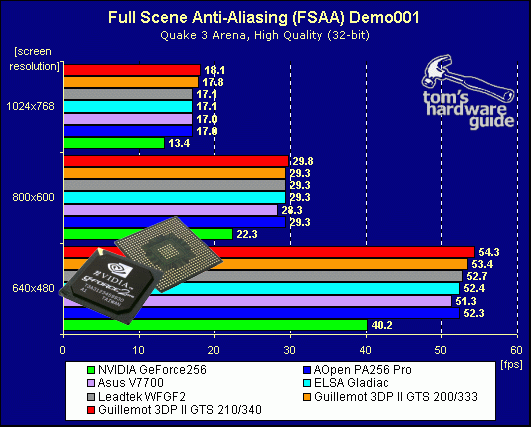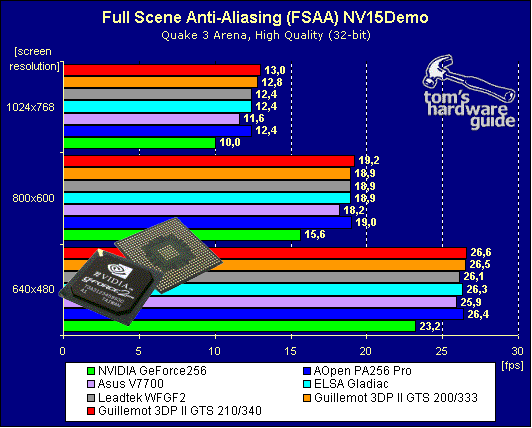Blue Wonder? The Guillemot/Hercules 3D Prophet II GTS
Full Scene Anti-Aliasing
Now we address the ever-popular topic of full scene anti-aliasing (FSAA), that smoothes the edges and thus improves the picture quality in games. To achieve this, nVidia renders the scenes in a frame buffer that is four times the size of a regular frame buffer. It creates a picture that is twice the size along the x-axis as well as along the y-axis (thus the depiction fourfold). Each frame is then filtered down to the default resolution, which achieves the smoothing effect on the edges. Important note: we just described the worst case scenario. Intermediate steps are also possible. Find out more about FSAA in Tom's article .
Let's look at this worst case now: The picture quality is admittedly impressive, but the frame rates are bad. At 800x600 they are at the same low level as at 1600x1200. This is not surprising, because the chip must render the scene internally at 1600x1200, and then filter it down to 800x600. Voila. The explanation is very simple. Personally, I am not too fond of FSAA in a shooting game like Quake. Quick reactions are more important here. In this case FSAA only slows things down - especially since the OpenGL driver only allows an on/off setting. In case of Direct3D games it is at least possible to set intermediate steps. Generally, I think that FSAA makes more sense for strategy games. The frame rates are less important and you also look at the scenes longer - most certainly longer than a motivated Quake player, who runs through the rooms with a gun in his hand.
During the NV15Demo everything slows down to a slow crawl with activated FSAA. At least the 3D Prophet II GTS achieves better results than all other candidates.
Get Tom's Hardware's best news and in-depth reviews, straight to your inbox.
Current page: Full Scene Anti-Aliasing
Prev Page Direct3D-Performance: 3DMark2000 Game1 Next Page Overclocking Chip And Memory

